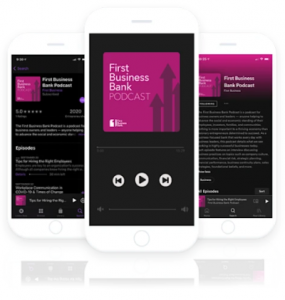For many years, Wisconsin manufacturers struggled to find qualified workers. Now, they are having difficulty finding merely attracting any employees.

WMEP, Vice President Consulting Services
“This issue really started to build in the mid to late 1990s. At that time, the cry was manufacturers were having trouble and problems finding skilled workers,” WMEP Manufacturing Solutions Vice President of Consulting Services George Bureau said. “Over time, we’ve seen that problem move from lack of skilled workers to not being able to find workers at all.
Many manufacturers in Wisconsin continue to experience challenges around their workforce, whether it’s keeping the talent they have, replacing workers who have retired or left, or finding new employees to support the growth of their businesses. Regardless, manufacturers are confronted with significant headwinds when it comes to employment issues.
“When you think of the drivers of all this, the elephant in the room is demographics, particularly the retirement of the baby boomer generation,” Bureau said. “Subsequent generations are generally smaller, as far as sheer numbers, which makes it more difficult, so the pool to replace retiring workers is smaller than the pool it is replacing.”
The state’s industrial workforce, for the most part, is aging, without a doubt. As if that dynamic alone didn’t present enough of a challenge, along came the COVID-19 pandemic, which greatly exacerbated existing workforce issues.
“That changed the dynamics about attitudes towards work,” Bureau said. “I think a lot of people re-evaluated, particularly if they had family members who were sick. They’ve re-evaluated what they wanted to do with their careers, where they wanted to go, and most importantly, work-life balance.”
The workforce challenges are deep and widespread for manufacturers, with many issues tied to pronounced and lingering worker shortages.
“Supply chain and supply chain issues are caused by, many times, undermanned manufacturing centers because of people being out for COVID-related health issues and increased demand that happened particularly during the crisis,” Bureau said. “So, there’s a lot of pressure put on the supply chain. The pressure on the supply chain has also caused manufacturers to be very busy at a time that they also have workforce challenges.”
Changing demographics, supply chain issues and now inflation have created a crisis for manufacturers in Wisconsin and across the country.
“It is particularly acute in manufacturing-heavy state economies, like Wisconsin,” Bureau said.
Nonetheless, manufacturers have choices when confronted with these challenges.
“There are some options,” Bureau said. “One is do nothing. That is an option. That’s a decision that you can make, which I’d strongly suggest you don’t do, and in essence become that victim, but I think there’s a number of things that a manufacturer can do.”
Although manufacturers can’t control demographics or the next variant of COVID-19, there are matters that companies can influence, like how to do more with less, the redeployment of workers and assets, and a potential shift to automation.
The latter has become a more appealing, if not necessary, choice for many of the state’s manufacturers.
“When you have open positions that are difficult to fill, what automation could do is it could take responsibilities and roles that are monotonous and perhaps dangerous or dirty and let automation do that work,” Bureau said. “Then take those people that were in those positions, upskill them, give them a chance to grow in their careers and fill other positions. It’s not about automation. It’s what it enables.”
In the face of workforce challenges, manufacturers need to position their companies to be attractive to prospective employees and highlight what makes their workplace desirable, Bureau said.
Manufacturers also need to be proactive in aggressively seeking out employees.
“In other words, don’t fish anywhere in the creek. Go where the fish are best biting,” Bureau said. “Go there and go there with a compelling message.”
Creating a company culture that stands out is also essential, as is stressing the benefits of working in a manufacturing environment, Bureau explained.
Manufacturers need to engage the “hearts and minds” of potential employees, he said.
“Show them that they have a career they can grow in, that they can take pride in,” Bureau said. “There are work situations out there where an employee doesn’t want to bring their family in because they’re ashamed of their working conditions. Imagine the opposite, where a family could come in and tour, and they’re showing their workstations and the beautiful place where they eat lunch.”
This not only helps attract employees, it also makes it easier to retain them, Bureau said.
Employees who are satisfied with their work environment and job will help attract other workers through one of the oldest and most effective recruiting tools – word-of-mouth testimonials.
“They’re talking to their friends, and they’re saying, ‘This is a really cool place to work, the exciting things that we’re doing. It’s a great place. I could see myself working there 10 more years. You need to come work here.’ That, to me, is where you know you’ve reached it, that your people are singing the praises for you,” Bureau said.
Make sure to check out the rest of First Business Bank’s podcasts and resources for manufacturers.
